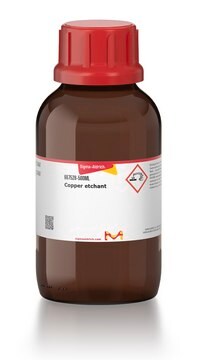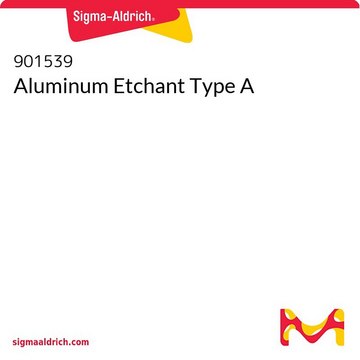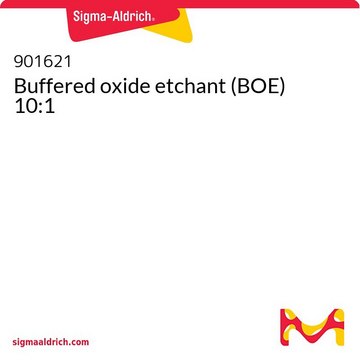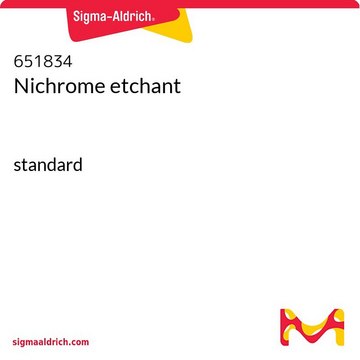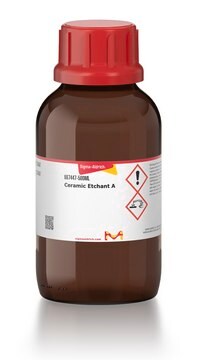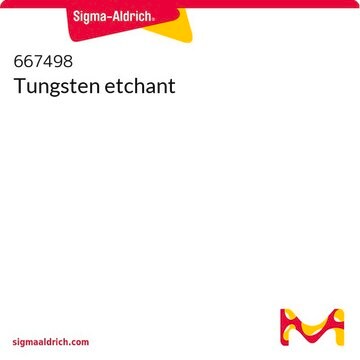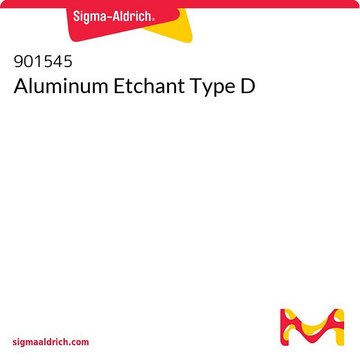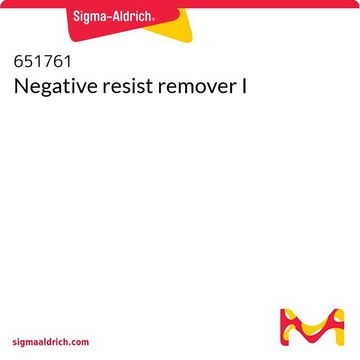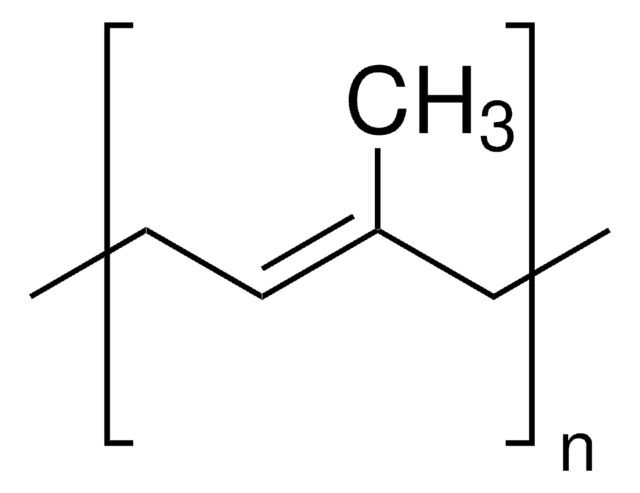651826
Chromium etchant
standard
Sinonimo/i:
Cr etching solution
Autenticatiper visualizzare i prezzi riservati alla tua organizzazione & contrattuali
About This Item
Prodotti consigliati
Grado
standard
Composizione
volatiles, 85%
Colore
orange
P. eboll.
100 °C/1 atm
Densità
1.16 g/mL at 25 °C
Descrizione generale
- Appearance - Clear orange
- pH - Acidic
- Etch Rate at 40 °C - 40 Å/second
- Etch Capacity (rate declines at ~70%) - 65 g/gallon
- Shelf Life - 1 year
- Storage Conditions - Ambient
- Filtration - 0.2 µm
- Recommended Operating Temperatures - 20-80 °C (30-40 °C most common)
- Rinse - Deionized water
- Photoresist Recommendations - KLT6000 Series, KLT 5300 Series, HARE SQT (SU-8 type), TRANSIST, or PKP -308PI
- Select Compatible Materials - Au, Ti, oxide, nitride, Si
- Select Incompatible Materials - Al, Ni, Cu, NiCr
- Compatible Plastics - HDPE, PP, PTFE, PFA, PVC
- Isotropy - Isotropic
- Incompatible Chemicals - Strong bases
Ceric ammonium nitrate-based etchant. Etch rate of 40 Å/sec @ room temp. Etches cleanly with only a deionized water rinse needed.
Chromium etchant is a chromium based solution that removes the excess metal from the substrate. These etchants are majorly used in metal finishing and electronic industry. It has an etch rate of 4 mm/s and can be used to etch nickel, copper, and chromium based excess metals.
Our chromium etchant is high purity ceric ammonium nitrate system for precise, clean etching of chromium and chromium oxide films. Compatible with positive and negative photoresists. Our chromium etchant is filtered to remove all particulates above 0.2 microns. Etching temperature varies depending on film thickness. Etch times range from 15 seconds to 60 seconds at room temperature. Chromium Etchants should be operated in a well-ventilated hood.
Applicazioni
The product can etch Al, Cr, Cu, Ni, GaAs. It can surface oxidize Si, Ta/TaN, however, it has no effect on Au, Si3N4, SiO2, Ti, and W surfaces
For use at room temperature or elevated temperature. Etches cleanly, eliminating need for an intermediate rinse. Etching temperature varies with regard to film thickness. Etch times range from 15 to 60 seconds at room temperature. Note, chromium etchants should be handled in a well ventilated hood.
Caratteristiche e vantaggi
Designed for precise, clean etching of chromium and chromium oxide films. Compatible with both positive and negative photoresists. Filtered to 0.2 micron to remove particlulates.
Avvertenze
Danger
Indicazioni di pericolo
Consigli di prudenza
Classi di pericolo
Aquatic Chronic 2 - Eye Dam. 1 - Met. Corr. 1 - Ox. Liq. 2 - Skin Corr. 1B - Skin Sens. 1
Rischi supp
Codice della classe di stoccaggio
5.1B - Oxidizing hazardous materials
Classe di pericolosità dell'acqua (WGK)
WGK 3
Punto d’infiammabilità (°F)
Not applicable
Punto d’infiammabilità (°C)
Not applicable
Scegli una delle versioni più recenti:
Possiedi già questo prodotto?
I documenti relativi ai prodotti acquistati recentemente sono disponibili nell’Archivio dei documenti.
I clienti hanno visto anche
Reconstituting Functional Microtubule-Barrier Interactions.
Methods in Cell Biology, 120(5), 69-90 (2014)
Fabrication and Mechanical Properties Measurements of 3D Microtissues for the Study of Cell-Matrix Interactions.
The Surfaceome, 120(5), 303-328 (2018)
The regeneration and recycle of chromium etching solutions using concentrator cell membrane technology.
Chaudhary AJ, et al.
Chemosphere, 62(5), 841-846 (2006)
Pressure-driven Fermi surface reconstruction of chromium
Stillwell RL, et al.
Physical Review, 88(12) (2013)
F J Alfaro-Mozaz et al.
Nature communications, 8, 15624-15624 (2017-06-08)
Polaritons in layered materials-including van der Waals materials-exhibit hyperbolic dispersion and strong field confinement, which makes them highly attractive for applications including optical nanofocusing, sensing and control of spontaneous emission. Here we report a near-field study of polaritonic Fabry-Perot resonances
Protocolli
Negative Photoresist Procedure
Il team dei nostri ricercatori vanta grande esperienza in tutte le aree della ricerca quali Life Science, scienza dei materiali, sintesi chimica, cromatografia, discipline analitiche, ecc..
Contatta l'Assistenza Tecnica.
